You are using an out of date browser. It may not display this or other websites correctly.
You should upgrade or use an alternative browser.
You should upgrade or use an alternative browser.
Hair = Antenna Theory
- Feb 14, 2006
- 512
- 31
Why does an SPN moderator target me and my comments for ridicule on this thread? And how is that inviting an open and welcome discussion forum respecting different ideas and beliefs? Did I indicate a desire to discuss on this thread with such materialistically inane comments such as: "Hair beats the VHS or Analog systems as it is Multi Directional?" And on another thread you even accuse me of having the capability of erasing the Sikh religion, which could be construed as acknowledging my danger to Sikhism, and even a code phrase for having me targeted by extremist fanatics. I would ask why an SPN moderator feels it appropriate to target me for such public ostracism and ridicule? I thought personal attacks were off limits. I receive warnings, infractions, deletions, accusations, etc because I object to such commentary. Yet you, as moderator encourage and actively promote the very things you accuse me of... personal attacks. What you are doing is a personal attack. What I am doing is objecting repeatedly to personal attacks, and attacks against another person's beliefs or religion. For this I get deletions and infractions. I am not on a thread accusing you of being a threat to the survival of Sikhism, or calling you out by name as having beliefs worthy of ridicule. What would be the point of sharing such beliefs on such a hostile forum? Since you don't believe in any spiritual or yogic purpose of hair, why do you keep it? If all you can do is mock this purpose of hair why not just encourage all Sikhs to cut and shave since there is no meaningful purpose but only mockery to be received by such practice?I'm looking forward for Harjas Kaur's comments. I'm sure she has vital points on the purpose of hair, like why the length on the head is longer than the rest of the body.
The Western scientists have no respect or regard for indigenous teachings, yoga included. It doesn't mean there is no validity to indigenous teachings, yoga included. It only underscores the profound hatred and mockery of indigenous teachings in the eyes of the wasichu (spiritually disconnected) people who have no respect for spiritual science which is not known to Western materialist science.
How sad that modern Sikhs imitate the same disrespect, intolerance and mockery of Western educational systems which despise all indigenous cultures, including people of Indic nationality. It is self-hatred. Too bad you don't even see it. At least someone like Deepak Chopra is able to blend Western science with Indic indigenous spiritual traditions in a positive and affirming way which upbuilds the entire Indic and even indigenous communities.
YouTube - MALCOLM X: Who Taught You To Hate Yourself?
ALL nationalism and movements of dignity against colonial racism and cultural self-despising is necessarily a spiritual movement. Even education, if it becomes a tool for degrading a person's culture is an evil thing. So why do we praise so highly the destructive colonial Western teachings which for hundreds of years have divided, denied, and despised the indigenous people of the earth? Who could laugh at such self-mockery? It is shameful.
ਗਿਆਨੁ ਧਿਆਨੁ ਧੁਨਿ ਜਾਣੀਐ ਅਕਥੁ ਕਹਾਵੈ ਸੋਇ ॥
giaan dhhiaan dhhun jaaneeai akathh kehaavai soe ||
Know that from the vibration of the Word, we obtain spiritual wisdom and meditation. Through it, we speak the Unspoken.
~SGGS Ji p. 59
giaan dhhiaan dhhun jaaneeai akathh kehaavai soe ||
Know that from the vibration of the Word, we obtain spiritual wisdom and meditation. Through it, we speak the Unspoken.
~SGGS Ji p. 59
Hair holds vibration, and in this respect is likened to a kind of antenna, because it carries the vibration of the spoken Gurmantra, Shabad-Naam, and hence opens subtle energies within the brain and alters brain chemistry to affect consciousness itself. Such is the teachings as Sas Giras Pranayama Simran Naam Abhiyaas is traceable to Siddha Nath yoga and writings about seed (beej) mantra vibration in Shaivism, which is also the root teaching of Surat Shab'd Yoga. Vibrating the Naam of the Lord with your entire body, placing your surti on the Naam and in deep dhyaan is a practice of yoga which purifies the mind itself and opens Fourth state of consciousness where the ability to perceive God is possible.
3-15 Emission (of consciousness) is the way of nature and so
what is not external is seen as external.
3-16 Attention to the seed.
3-17 Seated one sinks effortlessly into the lake (of consciousness).
3-18 The measure of consciousness fashions the world.
3-19 As (limited) knowledge is transcended, birth is transcended.
3-20 Maheshvari and other mothers (sources) of beings
reside in the sound elements.
3-21 The fourth (state of consciousness) should be used to
oil the (other) three (states of consciousness).
3-22 Absorbed (in his nature), one must penetrate (the phonemes)
with one's mind.
3-23 The lower plane arises in the center (of the phoneme).
3-24 A balanced breathing leads to a balanced vision.
3-25 What was destroyed rises again by the joining of perceptions
with the objects of experience.
3-26 He becomes like Shiva.
3-27 The activity of the body is the vow.
3-28 The recitation of the mantras is the discourse.
3-29 Self-knowledge is the boon.
3-30 He who is established is the means and knowledge.
3-31 The universe is teh aggregate of his powers.
~Shiva Sutra by Vasugupta
what is not external is seen as external.
3-16 Attention to the seed.
3-17 Seated one sinks effortlessly into the lake (of consciousness).
3-18 The measure of consciousness fashions the world.
3-19 As (limited) knowledge is transcended, birth is transcended.
3-20 Maheshvari and other mothers (sources) of beings
reside in the sound elements.
3-21 The fourth (state of consciousness) should be used to
oil the (other) three (states of consciousness).
3-22 Absorbed (in his nature), one must penetrate (the phonemes)
with one's mind.
3-23 The lower plane arises in the center (of the phoneme).
3-24 A balanced breathing leads to a balanced vision.
3-25 What was destroyed rises again by the joining of perceptions
with the objects of experience.
3-26 He becomes like Shiva.
3-27 The activity of the body is the vow.
3-28 The recitation of the mantras is the discourse.
3-29 Self-knowledge is the boon.
3-30 He who is established is the means and knowledge.
3-31 The universe is teh aggregate of his powers.
~Shiva Sutra by Vasugupta
ਬੇਦ ਪੁਰਾਨ ਸਿਮ੍ਰਿਤਿ ਬੂਝੈ ਮੂਲ ॥
baedh puraan simrith boojhai mool ||
He understands the fundamental essence of the Vedas, the Puraanas and the Simritees.
ਸੂਖਮ ਮਹਿ ਜਾਨੈ ਅਸਥੂਲੁ ॥
sookham mehi jaanai asathhool ||
In the unmanifest, he sees the manifest world to exist.
ਚਹੁ ਵਰਨਾ ਕਉ ਦੇ ਉਪਦੇਸੁ ॥
chahu varanaa ko dhae oupadhaes ||
He gives instruction to people of all castes and social classes.
ਨਾਨਕ ਉਸੁ ਪੰਡਿਤ ਕਉ ਸਦਾ ਅਦੇਸੁ ॥੪॥
naanak ous panddith ko sadhaa adhaes ||4||
O Nanak, to such a Pandit, I bow in salutation forever. ||4||
ਬੀਜ ਮੰਤ੍ਰੁ ਸਰਬ ਕੋ ਗਿਆਨੁ ॥
beej manthra sarab ko giaan ||
The Beej Mantra, the Seed Mantra, is spiritual wisdom for everyone.
ਚਹੁ ਵਰਨਾ ਮਹਿ ਜਪੈ ਕੋਊ ਨਾਮੁ ॥
chahu varanaa mehi japai kooo naam ||
Anyone, from any class, may chant the Naam.
ਜੋ ਜੋ ਜਪੈ ਤਿਸ ਕੀ ਗਤਿ ਹੋਇ ॥
jo jo japai this kee gath hoe ||
Whoever chants it, is emancipated.
~SGGS Ji p. 274
baedh puraan simrith boojhai mool ||
He understands the fundamental essence of the Vedas, the Puraanas and the Simritees.
ਸੂਖਮ ਮਹਿ ਜਾਨੈ ਅਸਥੂਲੁ ॥
sookham mehi jaanai asathhool ||
In the unmanifest, he sees the manifest world to exist.
ਚਹੁ ਵਰਨਾ ਕਉ ਦੇ ਉਪਦੇਸੁ ॥
chahu varanaa ko dhae oupadhaes ||
He gives instruction to people of all castes and social classes.
ਨਾਨਕ ਉਸੁ ਪੰਡਿਤ ਕਉ ਸਦਾ ਅਦੇਸੁ ॥੪॥
naanak ous panddith ko sadhaa adhaes ||4||
O Nanak, to such a Pandit, I bow in salutation forever. ||4||
ਬੀਜ ਮੰਤ੍ਰੁ ਸਰਬ ਕੋ ਗਿਆਨੁ ॥
beej manthra sarab ko giaan ||
The Beej Mantra, the Seed Mantra, is spiritual wisdom for everyone.
ਚਹੁ ਵਰਨਾ ਮਹਿ ਜਪੈ ਕੋਊ ਨਾਮੁ ॥
chahu varanaa mehi japai kooo naam ||
Anyone, from any class, may chant the Naam.
ਜੋ ਜੋ ਜਪੈ ਤਿਸ ਕੀ ਗਤਿ ਹੋਇ ॥
jo jo japai this kee gath hoe ||
Whoever chants it, is emancipated.
~SGGS Ji p. 274
ਰੋਮ ਰੋਮ ਮਹਿ ਬਸਹਿ ਮੁਰਾਰਿ ॥
rom rom mehi basehi muraar ||
and on each and every hair, the Lord abides.
~SGGS Ji p. 344
rom rom mehi basehi muraar ||
and on each and every hair, the Lord abides.
~SGGS Ji p. 344
ਬਾਣੀ ਰਾਮ ਨਾਮ ਸੁਣੀ ਸਿਧਿ ਕਾਰਜ ਸਭਿ ਸੁਹਾਏ ਰਾਮ ॥
baanee raam naam sunee sidhh kaaraj sabh suhaaeae raam ||
Hearing the Bani of the Lord's Name, all my affairs were brought to perfection and embellished.
ਰੋਮੇ ਰੋਮਿ ਰੋਮਿ ਰੋਮੇ ਮੈ ਗੁਰਮੁਖਿ ਰਾਮੁ ਧਿਆਏ ਰਾਮ ॥
romae rom rom romae mai guramukh raam dhhiaaeae raam ||
With each and every hair, with each and every hair, as Gurmukh, I meditate on the Lord.
~SGGS Ji p. 443
baanee raam naam sunee sidhh kaaraj sabh suhaaeae raam ||
Hearing the Bani of the Lord's Name, all my affairs were brought to perfection and embellished.
ਰੋਮੇ ਰੋਮਿ ਰੋਮਿ ਰੋਮੇ ਮੈ ਗੁਰਮੁਖਿ ਰਾਮੁ ਧਿਆਏ ਰਾਮ ॥
romae rom rom romae mai guramukh raam dhhiaaeae raam ||
With each and every hair, with each and every hair, as Gurmukh, I meditate on the Lord.
~SGGS Ji p. 443
ਰੋਮਿ ਰੋਮਿ ਰਵਿਆ ਹਰਿ ਨਾਮੁ ॥
rom rom raviaa har naam ||
The Lord's Name permeates each and every hair of mine.
ਸਤਿਗੁਰ ਪੂਰੈ ਕੀਨੋ ਦਾਨੁ ॥੧॥
sathigur poorai keeno dhaan ||1||
The Perfect True Guru has given me this gift. ||1||
~SGGS Ji p. 1144
rom rom raviaa har naam ||
The Lord's Name permeates each and every hair of mine.
ਸਤਿਗੁਰ ਪੂਰੈ ਕੀਨੋ ਦਾਨੁ ॥੧॥
sathigur poorai keeno dhaan ||1||
The Perfect True Guru has given me this gift. ||1||
~SGGS Ji p. 1144
- Jul 14, 2007
- 4,576
- 1,609
The Simran in Smadhi and Sun Smadhi continues until NIRGUN
AND SARGUN becomes one, at this point Simran goes into rom-rom –
every bit of your body does Naam Simran, your Suksham Dehi becomes as
pure as gold, your entire body is filled with Naam Amrit all the
time. You become Braham Leen, and Atal Awastha. These stages are
beyond description. Sat Chit Anand Ghar Hamare – Gurmukh Rom Rom Har
Dhyae – Nirgun Sargun Nirankaar Sun Smadhi Aap, Apan Kia Nanka Apan
Hi Fir Jaap and so on.
http://www.sikhism.us/spiritual-articles/20247-continuous-repetition-of-waheguru.html
Harjas Ji,
Thank you for sharing the guru ke bachan. Can you throw some light on why in sikh ardas it is important to remind ourselves about the sacrifices which surround hair kept unshorn ? Why the hindu dharam does not give as much importance as sikh dharma on hair ?
AND SARGUN becomes one, at this point Simran goes into rom-rom –
every bit of your body does Naam Simran, your Suksham Dehi becomes as
pure as gold, your entire body is filled with Naam Amrit all the
time. You become Braham Leen, and Atal Awastha. These stages are
beyond description. Sat Chit Anand Ghar Hamare – Gurmukh Rom Rom Har
Dhyae – Nirgun Sargun Nirankaar Sun Smadhi Aap, Apan Kia Nanka Apan
Hi Fir Jaap and so on.
http://www.sikhism.us/spiritual-articles/20247-continuous-repetition-of-waheguru.html
Harjas Ji,
Thank you for sharing the guru ke bachan. Can you throw some light on why in sikh ardas it is important to remind ourselves about the sacrifices which surround hair kept unshorn ? Why the hindu dharam does not give as much importance as sikh dharma on hair ?
Harjas Kaur Khalsa ji
Nicely said, maybe some of the one's who mock this topic will think twice before doing it again.
Nicely said, maybe some of the one's who mock this topic will think twice before doing it again.
If there is lack of gravity what happens? The right answer should address about this antenna theory. "Rom Rom vich ravna" is an idiom, it has nothing to do with the frequencies or the hair. It is sad, we have come down to so superficial meanings.
- Feb 14, 2006
- 512
- 31
Harjas Ji,
Thank you for sharing the Guru ke bachan. Can you throw some light on why in Sikh ardas it is important to remind ourselves about the sacrifices which surround hair kept unshorn ? Why the hindu dharam does not give as much importance as Sikh dharma on hair ?
ਕਬੀਰ ਪ੍ਰੀਤਿ ਇਕ ਸਿਉ ਕੀਏ ਆਨ ਦੁਬਿਧਾ ਜਾਇ ॥
kabeer preeth eik sio keeeae aan dhubidhhaa jaae ||
Kabeer, when you are in love with the One Lord, duality and alienation depart.
ਭਾਵੈ ਲਾਂਬੇ ਕੇਸ ਕਰੁ ਭਾਵੈ ਘਰਰਿ ਮੁਡਾਇ ॥੨੫॥
bhaavai laanbae kaes kar bhaavai gharar muddaae ||25||
You may have long hair, or you may shave your head bald. ||25||
~SGGS Ji p. 1365
kabeer preeth eik sio keeeae aan dhubidhhaa jaae ||
Kabeer, when you are in love with the One Lord, duality and alienation depart.
ਭਾਵੈ ਲਾਂਬੇ ਕੇਸ ਕਰੁ ਭਾਵੈ ਘਰਰਿ ਮੁਡਾਇ ॥੨੫॥
bhaavai laanbae kaes kar bhaavai gharar muddaae ||25||
You may have long hair, or you may shave your head bald. ||25||
~SGGS Ji p. 1365
Keeping kesh as a practice of holding vibration for japa is a particular yogic practice. It is not the ONLY yogic practice. If you notice in the world, the religious people of all traditions, you see three types. Those who keep hair or beard. Those who shave themselves bald. And those who have no preference. Some keep long beard and shaved head or mixed in the same tradition of shaven initiates as well as uncut hairs. Basically, hair in yogic theory affects your perception of subtle energies, vibrations such as mantras and shakti, or even Dhikr as in Shaivism and Sufism. Hair is an extention and heightened instrument of perception of your mind, not unlike a cat's whiskers. Most modern people are completely disconnected from their own body and not in touch with traditional phrases such as "My hairs stood on end." Your hairs are a form of the skin's perception as well as a part of the spine and brain. Most modern people shave their armpit hairs and slather deodorant which blocks the pores, not realizing that the sweat which naturally trickles down the armpit hairs acts as a wick to draw out the waste products from the body containing viruses, bacteria, hormones, etc to regulate and keep everything in balance. It is also ignored that 80% of all human breast cancers first occur in the upper outer quadrant, which is directly below the armpit. So the wisdom of modernity fails to impress me. It is what it is... disconnection and absence of fine tuned perception of the natural phenomena and the body's instinctive perceptual wisdom. And this is precisely what these forms of yogic practice intend to enhance... perception and intuition, either of inner silence through shaven head, or energetic attunement through uncut hairs.
In some traditions such as Buddhism, and Christian contemplative Orders, there is a strong emphasis on silence and hours long meditation. Such traditions are associated with shaving the hair to reduce distractions. There is a tradition that Jesus kept uncut hair as a consecrated nazirite for life. This would reflect that he was sinless in human nature and another sign of his identity as an avataar.
In Jewish Kabbalah, the original state of a man was to keep long hair, and in certain vow of a nazirite, the hair is kept uncut for a period of time. It was the fallen sinful state of man which rendered the keeping of uncut hair as potentially harmful. It is from Kabbalistic teaching that orthodox Jews shave their heads, but keep untrimmed the hairs on the side of their heads and beards. Tantrics on the other hand, both Shaivites and some schools of Buddhism keep long uncut hair, and tend toward the more intensive tapasya practices such as meditating in cremation grounds, drinking from human skulls, commanding spirits, and in other ways trying to master sansaara. Tibetan tantrics and Bon shamans as well as Jamaican Rastafarians have a lot in common with Shaivism.
The jura basically comes from Shiva. It is a practice of mastery over the mind and consciousness. The two forms are unclean, matted hairs which Guru Nanak Dev Ji criticized, and the keeping of clean, combed kesh which Guruji advocated. So we see, even examining the yogic use of hair, the hair is worn as a seal over the dasm duar, and kept purified with Naama japa to cleanse the negative influences which could reside in hair as coming from the hormones and neurotransmitters and bacterial waste excretion which is residue from unclean and impure thoughts of the human mind and brain.
A Sikh is like a purified householder yogi who practices moderation instead of severity. This is the Dharam and teaching of Guruji's Raja Yoga. We can see that keeping hair can deliberately be a form of spiritual practice. But without the practice, simply keeping hair is a vanity and corruption.
ਕਬੀਰ ਨ੍ਰਿਪ ਨਾਰੀ ਕਿਉ ਨਿੰਦੀਐ ਕਿਉ ਹਰਿ ਚੇਰੀ ਕਉ ਮਾਨੁ ॥
kabeer nrip naaree kio nindheeai kio har chaeree ko maan ||
Kabeer, why do you slander the wife of the king? Why do you honor the slave of the Lord?
ਓਹ ਮਾਂਗ ਸਵਾਰੈ ਬਿਖੈ ਕਉ ਓਹ ਸਿਮਰੈ ਹਰਿ ਨਾਮੁ ॥੧੬੦॥
ouh maang savaarai bikhai ko ouh simarai har naam ||160||
Because one combs her hair for corruption, while the other remembers the Name of the Lord.
~SGGS Ji p. 1373
kabeer nrip naaree kio nindheeai kio har chaeree ko maan ||
Kabeer, why do you slander the wife of the king? Why do you honor the slave of the Lord?
ਓਹ ਮਾਂਗ ਸਵਾਰੈ ਬਿਖੈ ਕਉ ਓਹ ਸਿਮਰੈ ਹਰਿ ਨਾਮੁ ॥੧੬੦॥
ouh maang savaarai bikhai ko ouh simarai har naam ||160||
Because one combs her hair for corruption, while the other remembers the Name of the Lord.
~SGGS Ji p. 1373
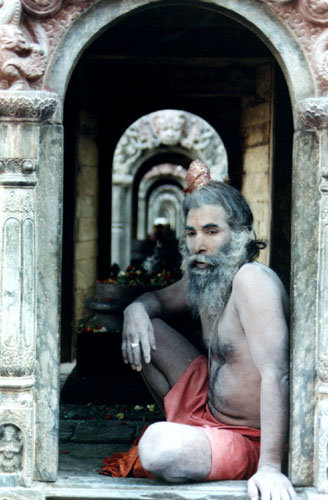

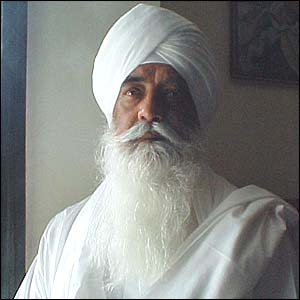
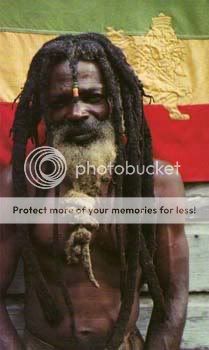
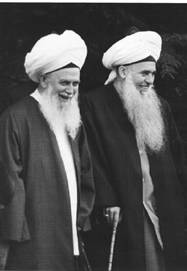
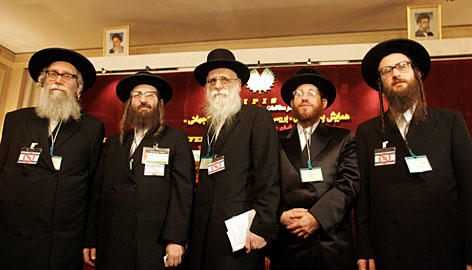
According to the Kabbalah, in a spiritual sense hair is the waste product of the brain. Long strands of hair in men may act as ropes to which negative influences may take hold. This is considered particularly true regarding the hair at the back of the neck near the brain stem, which is the point of connection between the brain and the rest of the body. Harmful influences seek to attach there in order to "sever" a healthy connection between the spiritual and physical, effecting a sort of spiritual decapitation.
"Interestingly, the Zohar differentiates between the rest of the hair and that at the sides of the head and the beard. This hair is said to originate from holy sources and projects positive spiritual energy: "The hair locks are shaped and hang in wavy curls from one side to the other side of the skull. This is what is written, His locks are wavy.They are situated hanging in curls, because they flow forth from great springs of the three divisions of the brain. From the spring of the first space in the skull, [Chochmah].From the second space, [Binah].From the third space, [Daat] go forth thousands of thousands of rooms and chambers, and the hairs flow forth continuously from all. Therefore, these locks are curls upon curls." Ohr Somayach :: Ask The Rabbi :: Ponytail
A nazirite or nazarite, (in Hebrew: נזיר, nazir), refers to a *** who took the ascetic vow described in Numbers 6:1-21. The term "nazirite" comes from the Hebrew word nazir meaning "consecrated" or "separated"...[1]
This vow required the man or woman to observe the following:
Abstain from wine, wine vinegar, grapes, raisins, and according - to some alcohol and vinegar from alcohol;
Refrain from cutting the hair on one's head;
Avoid corpses and graves, even those of family members, and any structure which contains such.
It is also forbidden for the nazirite to have grape, or grape derivatives even if they are not alcoholic. According to Rabbinical interpretation there is no prohibition for the nazirite to drink alcoholic beverages not derived from grapes.[13] According to non-Rabbinical interpretation, a Nazirite is forbidden to consume any alcohol, and vinegar from such alcohol, regardless of its source.[citation needed] The laws of wine or grapes mixing in other food is similar to other dietary laws that apply to all Jews.[14]
A nazirite can groom his hair with his hand or scratch his head and needn’t be concerned if some hair falls out. However a nazirite cannot comb his hair since it is a near certainty to pull out some hair...
Two examples of Nazirites in the Hebrew Bible are Samson (Judges 13:5), and Samuel (1 Samuel 1:11). In both cases, their mothers made the vows before they were born, which required them to live an ascetic life, yet in return they received extraordinary gifts: Samson possessed strength and ability in physical battle, while Samuel was a prophet.
Samson appears to break his vows, by touching a dead body (Judges 14:8-9) and drinking wine (he holds a משׁתה, "drinking party", in Judges 14:10). Goswell suggests that "we cannot understand the career and failings of Samson without attention to his Nazirite status."[23]
Judges 13:6-7 (Judaica Press)
6. And the woman came and said to her husband, saying, "A man of God came to me, and his appearance was like the appearance of an angel of God, very awesome; and I did not ask him from where he was and his name he did not tell me.
7. And he said to me, 'Behold, you shall conceive and bear a son; and now do not drink wine and strong drink, and do not eat any unclean (thing), for a nazirite to God shall the lad be, from the womb until the day of his death.'
Amos 2:11-12 (Judaica Press)
11. And I raised up some of your sons as prophets and some of your young men as nazirites; is this not so, O children of Israel? says the Lord.
12. And you gave the nazirites to drink wine, and you commanded the prophets saying, "Do not prophesy."
Furthermore, although Luke 1:13-15 describes John the Baptist as a Nazirite from birth, John implied that Jesus was holier than he in Matthew 3:13-15, which says, "Then cometh Jesus from Galilee to Jordan unto John, to be baptized of him. But John forbad him, saying, I have need to be baptized of thee, and comest thou to me? And Jesus answering said unto him, Suffer it to be so now: for thus it becometh us to fulfil all righteousness. Then he suffered him". Thus Jesus was baptized, immersion in water being a fulfillment of the nazirite vow...
The tradition of the nazirite vow has had a significant influence on the modern Rastafari Movement, and elements of the vow have been adopted as part of this religion. In describing the obligations of their religion, Rastafari make reference to the nazirite vow taken by Samson. Part of this vow, as adopted by the Rastafari, is to avoid the cutting of one's hair. This is inspired by the text of Leviticus 21:5 "They shall not make baldness upon their head, neither shall they shave off the corner of their beard nor make any cuttings in their flesh." The visible sign of this vow is the Rasafarian's dreadlocks.[30][31] Some Rastafari have concluded that Samson had dreadlocks, as suggested by the description stating that he had seven locks upon his head. Others interpret Samson's "locks" to have been simple braids. Nazirite - Wikipedia, the free encyclopedia
Both John the Baptist and Jesus were from the strict Tzadokite lineage. We know for certain that John the Baptist was a nazirite consecrated from birth. Jesus remains a subject of dispute with archaelogical views putting him squarely in the Zadokite community of Qumran of the Dead Sea scrolls. In which case he almost certainly would have been an unshorn nazirite. The fact that he famously broke the nazirite prohibition against strong drink by using wine, and even making wine central to his pujas, underscores his mythological relationship to the Greek god Dionysus. It might also have a relationship to some degree of tantrism in his teachings which completely flouted conventional mores. Another Shaivite association. Zadokite Priesthood, the original Hasidim
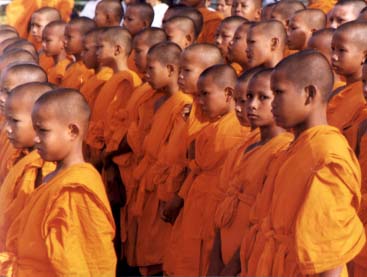

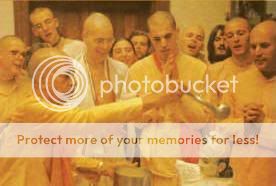

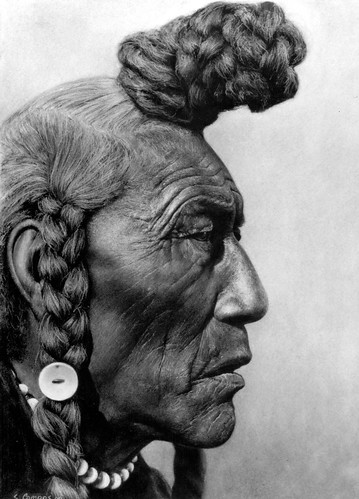
Native American Indian tribes and shamans had a variety of spiritual practices involving hair. Most keeping uncut hair. As an asiatic race related to ancient Mongolians, they have very little facial hair. The many Native Indian tribes have a lot in common with the spiritualism of Siberian Mongolian Shaman, in some ways a derivative of pre-Buddhist Bon Shamanism which initiates act as the Dalai Lama's official state oracles by inducing trance states. This shows another similarity with Shaivism as a tantric shakti path, with heavy emphasis on drumming, ethneogens (sacred hallucinogenic plants) and altered states of consciousness.
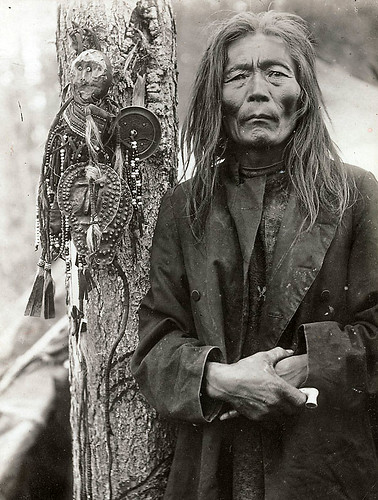

So as you can see there are ancient traditions throughout the world, and each has similarities. Gurbani is clear that neither the shaven head nor the long haired head makes the spirituality, but overcoming duality and Maya have to do with sincerity and genuineness of spiritual practice... and having a Satguru. It is equally clear that Guruji's path is a path which respects the power of hair and keeps it as a form of submission and surrender of the ego mind to God and Guru.
~Bhul chak maaf
- Feb 14, 2006
- 512
- 31
It is sad you don't look beyond your Western educated nose to see the vast psychic spiritual traditions which harness the shakti of the hair and prefer to relegate powerful teachings to mere literary idioms.If there is lack of gravity what happens? The right answer should address about this antenna theory. "Rom Rom vich ravna" is an idiom, it has nothing to do with the frequencies or the hair. It is sad, we have come down to so superficial meanings.
The doctrine and yogic teachings on vibration which are only in part related to keshas, have everything to do with the power of mantras. For example in the Kashmiri Shaivite scripture Pratyabhijna-hridayam it says, "The goddess of universal consciousness, flowing with unfettered freedom displays Her awesome power in the manifestation of the Universe. To which Shree Ma translated, "The God you seek is present in every atom of creation." So it is a teaching that the Divine is present in form of energy, shakti, power and vibration, sound, harmony, light.
The Spanda system, introduced by Vasugupta (c. 800 AD), is usually described as "vibration/movement of consciousness". Abhinavagupta uses the expression "some sort of movement" to imply the distinction from physical movement; it is rather a vibration or sound inside the Divine, a throb[44]. The essence of this vibration is the ecstatic self-recurrent consciousness[45].
The central tenet of this system is "everything is Spanda", both the objective exterior reality and the subjective world[46][47]. Nothing exists without movement[48], yet the ultimate movement takes place not in space or time, but inside the Supreme Consciousness(cit). So, it is a cycle of internalization and externalization of consciousness itself[49], relating to the most elevated plane in creation (Śiva-Śakti Tattva)[50]. Kashmir Shaivism - Wikipedia
But perhaps you don't believe in mantras anymore than in the power of keshas to hold their vibration. If that is the case, you have lost the Naam. So I would reflect on what you are equating with simple science of gravity and literary idiom and what you consider sad. Since neither the physicality of gravity and idioms have any relation to the power of vibrating Shabad to take you into the heart of the Divine. The vibrating motion (energy flow) of prana and chitta experienced as vritti, the fluctuations of this subtle energy, is the very basis of spiritual experience.
"That principle should be examined with effort and reverence because this uncreated freedom prevails everywhere. By virtue of it, the senses along with the inner circle abide there. Indeed the individual soul does not activate the impulse, but He Himself alone."~Vasugupta, The Spandakarika, Stanzas of Vibration
I do not say you MUST keep kesas to be a spiritual person. But if you are a Sikh you must respect kesas as a teaching of Guruji.
ਅਨਹਤ ਬਾਣੀ ਨਿਰਮਲ ਸਬਦੁ ਵਜਾਏ ਗੁਰ ਸਬਦੀ ਸਚਿ ਸਮਾਵਣਿਆ ॥੪॥
anehath baanee niramal sabadh vajaaeae gur sabadhee sach samaavaniaa ||4||
The Unstruck Melody of the Bani resounds through the Pure Word of the Shabad; through the Word of the Guru's Shabad, we are absorbed into the True One. ||4||
~SGGS Ji p. 115
anehath baanee niramal sabadh vajaaeae gur sabadhee sach samaavaniaa ||4||
The Unstruck Melody of the Bani resounds through the Pure Word of the Shabad; through the Word of the Guru's Shabad, we are absorbed into the True One. ||4||
~SGGS Ji p. 115
ਪੰਚ ਸਬਦ ਧੁਨਿਕਾਰ ਧੁਨਿ ਤਹ ਬਾਜੈ ਸਬਦੁ ਨੀਸਾਣੁ ॥
panch sabadh dhhunikaar dhhun theh baajai sabadh neesaan ||
The Panch Shabad, the Five Primal Sounds, resonate and resound within; the insignia of the Shabad is revealed there, vibrating gloriously.
~SGGS Ji p. 1291
panch sabadh dhhunikaar dhhun theh baajai sabadh neesaan ||
The Panch Shabad, the Five Primal Sounds, resonate and resound within; the insignia of the Shabad is revealed there, vibrating gloriously.
~SGGS Ji p. 1291
ਅੰਮ੍ਰਿਤ ਬਾਣੀ ਸਿਉ ਚਿਤੁ ਲਾਏ ਅੰਮ੍ਰਿਤ ਸਬਦਿ ਵਜਾਵਣਿਆ ॥੫॥
anmrith baanee sio chith laaeae anmrith sabadh vajaavaniaa ||5||
Those who focus their consciousness on the Ambrosial Bani of the Word, hear the vibrations of the Ambrosial Word of the Shabad. ||5||
~SGGS Ji p. 118
anmrith baanee sio chith laaeae anmrith sabadh vajaavaniaa ||5||
Those who focus their consciousness on the Ambrosial Bani of the Word, hear the vibrations of the Ambrosial Word of the Shabad. ||5||
~SGGS Ji p. 118
ਸਭ ਕੋ ਮਾਤ ਪਿਤਾ ਪ੍ਰਤਿਪਾਲਕ ਜੀਅ ਪ੍ਰਾਨ ਸੁਖ ਸਾਗਰੁ ਰੇ ॥
sabh ko maath pithaa prathipaalak jeea praan sukh saagar rae ||
He is Mother and Father, the Cherisher of all; He is the Breath of life of all beings, the Ocean of peace.
~SGGS Ji p. 209
sabh ko maath pithaa prathipaalak jeea praan sukh saagar rae ||
He is Mother and Father, the Cherisher of all; He is the Breath of life of all beings, the Ocean of peace.
~SGGS Ji p. 209
A saying from the Vedas claims that "Speech is the essence of humanity." All of what humanity thinks and ultimately becomes is determined by the expression of ideas and actions through speech and its derivative, writing. Everything, the Vedas maintain, comes into being through speech. Ideas remain unactualized until they are created through the power of speech. Similarly, The New Testament, Gospel of John, starts "In the beginning was The Word. And the Word was with God and the Word was God..."
In mainstream Vedic practices, most Buddhist techniques and classical Hinduism, mantra is viewed as a necessity for spiritual advancement and high attainment. In The Kalachakra Tantra, by the Dalai Lama and Jeffrey Hopkins, the Dalai Lama states, "Therefore, without depending upon mantra...Buddhahood cannot be attained..."
Mantras start a powerful vibration which corresponds to both a specific spiritual energy frequency and a state of consciousness in seed form. Over time, the mantra process begins to override all of the other smaller vibrations, which eventually become absorbed by the mantra. After a length of time which varies from individual to individual, the great wave of the mantra stills all other vibrations. Ultimately, the mantra produces a state where the organism vibrates at the rate completely in tune with the energy and spiritual state represented by and contained within the mantra.
At this point, a change of state occurs in the organism. The organism becomes subtly different. Just as a laser is light which is coherent in a new way, the person who becomes one with the state produced by the mantra is also coherent in a way which did not exist prior to the conscious undertaking of repetition of the mantra...
The word "mantra" is derived from two Sanskrit words. The first is "manas" or "mind," which provides the "man" syllable. The second syllable is drawn from the Sanskrit word "trai" meaning to "protect" or to "free from." Therefore, the word mantra in its most literal sense means "to free from the mind." What is a Mantra and How Does It Work?
I guess you're out of touch with the thousand year old complex philosophical systems of yoga which originated and thrived in the Indus Valley and particularly in the area of Punjab where the powerful Kashmiri Siddha Nath philosophers such as Vasugupta and Abhinavagupta wrote treatises on the vibration of light and sound, and had profound impact on later spiritual systems of Guru-Chela Kundalini shaktipat transmission, and of course provided definitions and basis for teachings such as Shabad, Naam and Gurmantara. But you don't have to believe it.it has nothing to do with the frequencies or the hair.
Keeping in mind your uncalled for references and pictures and use of Gurbani” out of context, to judge me as having knowledge of “western educated nose”, my very simple answer to you,( any one disagrees with you is western or inflicted by westerns, against Vedas, Sanatnas and Hindus, it has been advocated right in your posts Bhain ji, nothing is new.) is a Hukam of Guru ji to the Sikhs in SGGS Ji in which he asks them to do what is loved by the Guru. Here it is, not a word on Yoga theory, Sanatna and others blab bla which can be helpful as many today cook new things like children, we already discussed which ended up in blaming the Forum and forum members, lets not go there again, ponder over the Shabad, does this Guru Order any where refers to any thing other than Love for HIM, NO ! NO! NO! If it were so vital, it would have been explained telling them” Make “joora” in the middle, use it like antenna etc etc, but Guru ji knows what is vital unlike others who have difficulty from going away from these things and have difficulty just obeying Guru to move on.
Sree Guru Granth Sahib is all about HIS Name and blossoming love for HIM as mind is taken way high from duality. Hope the following Guru Hukam you already obey and get involved in Him than jumping around the corner.
ਮਃ ੪ ॥ ਗੁਰ ਸਤਿਗੁਰ ਕਾ ਜੋ ਸਿਖੁ ਅਖਾਏ ਸੁ ਭਲਕੇ ਉਠਿ ਹਰਿ ਨਾਮੁ ਧਿਆਵੈ ॥ ਉਦਮੁ ਕਰੇ ਭਲਕੇ ਪਰਭਾਤੀ ਇਸਨਾਨੁ ਕਰੇ ਅੰਮ੍ਰਿਤ ਸਰਿ ਨਾਵੈ ॥ ਉਪਦੇਸਿ ਗੁਰੂ ਹਰਿ ਹਰਿ ਜਪੁ ਜਾਪੈ ਸਭਿ ਕਿਲਵਿਖ ਪਾਪ ਦੋਖ ਲਹਿ ਜਾਵੈ ॥ ਫਿਰਿ ਚੜੈ ਦਿਵਸੁ ਗੁਰਬਾਣੀ ਗਾਵੈ ਬਹਦਿਆ ਉਠਦਿਆ ਹਰਿ ਨਾਮੁ ਧਿਆਵੈ ॥ ਜੋ ਸਾਸਿ ਗਿਰਾਸਿ ਧਿਆਏ ਮੇਰਾ ਹਰਿ ਹਰਿ ਸੋ ਗੁਰਸਿਖੁ ਗੁਰੂ ਮਨਿ ਭਾਵੈ ॥
4th Guru. He, who calls himself a Sikh of the Great True Guru, should rise early and meditate on God's Name. He should make efforts early in the morning take bath and have ablution in the tank of Nectar. By repeating Lords God's Name under Guru's instruction all his sins misdeeds and accusations are wiped off. Afterwards at sun rise he sings Gurbani and whilst sitting or standing he meditates in God's Name. The Guru's disciple who with every breath and morsel contemplates over my Lord God he becomes pleasing to Guru's mind.
ਭਲਕੇ = ਨਿੱਤ ਸਵੇਰੇ।ਅੰਮ੍ਰਿਤਸਰਿ = ਨਾਮ-ਰੂਪ ਅੰਮ੍ਰਿਤ ਦੇ ਸਰੋਵਰ ਵਿਚ। ਉਪਦੇਸਿ = ਉਪਦੇਸ਼ ਦੀ ਰਾਹੀਂ।ਕਿਲਵਿਖ = ਪਾਪ। ਸਾਸਿ = ਸਾਹ ਦੇ ਨਾਲ। ਗਿਰਾਸਿ = ਗਿਰਾਹੀ ਦੇ ਨਾਲ। ਸਾਸਿ ਗਿਰਾਸਿ =ਹਰ ਦਮ।
[/FONT]ਜੋਮਨੁੱਖ ਸਤਿਗੁਰੂ ਦਾ (ਸੱਚਾ) ਸਿੱਖ ਅਖਵਾਂਦਾ ਹੈ (ਭਾਵ, ਜਿਸ ਨੂੰ ਲੋਕ ਸੱਚਾ ਸਿੱਖਆਖਦੇ
ਹਨ) ਉਹ ਰੋਜ਼ ਸਵੇਰੇ ਉੱਠ ਕੇ ਹਰਿ-ਨਾਮ ਦਾ ਸਿਮਰਨ ਕਰਦਾ ਹੈ, ਹਰ ਰੋਜ਼ ਸਵੇਰੇਉੱਦਮ ਕਰਦਾ ਹੈ, ਇਸ਼ਨਾਨ ਕਰਦਾ ਹੈ (ਤੇ ਫਿਰ ਨਾਮ-ਰੂਪ) ਅੰਮ੍ਰਿਤ ਦੇ ਸਰੋਵਰ ਵਿਚ ਟੁੱਭੀਲਾਉਂਦਾ ਹੈ, ਸਤਿਗੁਰੂ ਦੇ ਉਪਦੇਸ਼ ਦੁਆਰਾ ਪ੍ਰਭੂ ਦੇ ਨਾਮ ਦਾ ਜਾਪ ਜਪਦਾ ਹੈ ਤੇ (ਇਸਤਰ੍ਹਾਂ) ਉਸ ਦੇ ਸਾਰੇ ਪਾਪ-ਵਿਕਾਰ ਲਹਿ ਜਾਂਦੇ ਹਨ; ਫਿਰ ਦਿਨ ਚੜ੍ਹੇ ਸਤਿਗੁਰੂ ਦੀਬਾਣੀ ਦਾ ਕੀਰਤਨ ਕਰਦਾ ਹੈ ਤੇ (ਦਿਹਾੜੀ) ਬਹਿੰਦਿਆਂ ਉੱਠਦਿਆਂ (ਭਾਵ, ਕਾਰ-ਕਿਰਤਕਰਦਿਆਂ) ਪ੍ਰਭੂ ਦਾ ਨਾਮ ਸਿਮਰਦਾ ਹੈ। ਸਤਿਗੁਰੂ ਦੇ ਮਨ ਵਿਚ ਉਹ ਸਿੱਖ ਚੰਗਾ ਲੱਗਦਾ ਹੈਜੋ ਪਿਆਰੇ ਪ੍ਰਭੂ ਨੂੰ ਹਰ ਦਮ ਯਾਦ ਕਰਦਾ ਹੈ।
ਜਿਸ ਨੋ ਦਇਆਲੁ ਹੋਵੈ ਮੇਰਾ ਸੁਆਮੀ ਤਿਸੁ ਗੁਰਸਿਖ ਗੁਰੂ ਉਪਦੇਸੁ ਸੁਣਾਵੈ ॥ ਜਨੁ ਨਾਨਕੁ ਧੂੜਿ ਮੰਗੈ ਤਿਸੁ ਗੁਰਸਿਖ ਕੀ ਜੋ ਆਪਿ ਜਪੈ ਅਵਰਹ ਨਾਮੁ ਜਪਾਵੈ ॥੨॥
He unto whom my Master becomes merciful to that disciple of his, the Guru imparts his instruction. Servant Nanak asks for the dust of the feet of that Sikh of the Guru, who himself contemplates on God's Name and makes others contemplate thereon.
ਅਵਰਹ = ਹੋਰਨਾਂ ਨੂੰ।੨।
ਜਿਸਤੇ ਪਿਆਰਾ ਪ੍ਰਭੂ ਦਿਆਲ ਹੁੰਦਾ ਹੈ, ਉਸ ਗੁਰਸਿੱਖ ਨੂੰ ਸਤਿਗੁਰੂ ਸਿੱਖਿਆ ਦੇਂਦਾ ਹੈ।ਦਾਸ ਨਾਨਕ (ਭੀ) ਉਸ ਗੁਰਸਿੱਖ ਦੀ ਚਰਨ-ਧੂੜ ਮੰਗਦਾ ਹੈ ਜੋ ਆਪ ਨਾਮ ਜਪਦਾ ਹੈ ਤੇਹੋਰਨਾਂ ਨੂੰ ਜਪਾਉਂਦਾ ਹੈ।੨।
GURU MESSAGE IS COMPLETE, NO MIXED MUSIC IS NEEDED TO FOLLOW IT
Forth Nanak said what the first Nanak said
ਰਾਮਕਲੀ ਮਹਲਾ ੧ ॥ ਜਾ ਹਰਿ ਪ੍ਰਭਿ ਕਿਰਪਾ ਧਾਰੀ ॥ ਤਾ ਹਉਮੈ ਵਿਚਹੁ ਮਾਰੀ ॥ ਸੋ ਸੇਵਕਿ ਰਾਮ ਪਿਆਰੀ ॥ ਜੋ ਗੁਰ ਸਬਦੀ ਬੀਚਾਰੀ ॥੧॥
Ramkali 1st Guru. When the Lord God was in mercy, then was my self-conceit dispelled, from within me. That attedant is dear to the Lord, who reflects over the Guru's word.
ਸੋ ਹਰਿ ਜਨੁ ਹਰਿ ਪ੍ਰਭ ਭਾਵੈ ॥ ਅਹਿਨਿਸਿ ਭਗਤਿ ਕਰੇ ਦਿਨੁ ਰਾਤੀ ਲਾਜ ਛੋਡਿ ਹਰਿ ਕੇ ਗੁਣ ਗਾਵੈ ॥੧॥ ਰਹਾਉ ॥
That God's slave is pleasing to the Lord-God, who day and night ever performs Lord's devotional service and disregarding honour and dishonour, sings God's praise. Pause.
Sree Guru Granth Sahib is all about HIS Name and blossoming love for HIM as mind is taken way high from duality. Hope the following Guru Hukam you already obey and get involved in Him than jumping around the corner.
ਮਃ ੪ ॥ ਗੁਰ ਸਤਿਗੁਰ ਕਾ ਜੋ ਸਿਖੁ ਅਖਾਏ ਸੁ ਭਲਕੇ ਉਠਿ ਹਰਿ ਨਾਮੁ ਧਿਆਵੈ ॥ ਉਦਮੁ ਕਰੇ ਭਲਕੇ ਪਰਭਾਤੀ ਇਸਨਾਨੁ ਕਰੇ ਅੰਮ੍ਰਿਤ ਸਰਿ ਨਾਵੈ ॥ ਉਪਦੇਸਿ ਗੁਰੂ ਹਰਿ ਹਰਿ ਜਪੁ ਜਾਪੈ ਸਭਿ ਕਿਲਵਿਖ ਪਾਪ ਦੋਖ ਲਹਿ ਜਾਵੈ ॥ ਫਿਰਿ ਚੜੈ ਦਿਵਸੁ ਗੁਰਬਾਣੀ ਗਾਵੈ ਬਹਦਿਆ ਉਠਦਿਆ ਹਰਿ ਨਾਮੁ ਧਿਆਵੈ ॥ ਜੋ ਸਾਸਿ ਗਿਰਾਸਿ ਧਿਆਏ ਮੇਰਾ ਹਰਿ ਹਰਿ ਸੋ ਗੁਰਸਿਖੁ ਗੁਰੂ ਮਨਿ ਭਾਵੈ ॥
4th Guru. He, who calls himself a Sikh of the Great True Guru, should rise early and meditate on God's Name. He should make efforts early in the morning take bath and have ablution in the tank of Nectar. By repeating Lords God's Name under Guru's instruction all his sins misdeeds and accusations are wiped off. Afterwards at sun rise he sings Gurbani and whilst sitting or standing he meditates in God's Name. The Guru's disciple who with every breath and morsel contemplates over my Lord God he becomes pleasing to Guru's mind.
ਭਲਕੇ = ਨਿੱਤ ਸਵੇਰੇ।ਅੰਮ੍ਰਿਤਸਰਿ = ਨਾਮ-ਰੂਪ ਅੰਮ੍ਰਿਤ ਦੇ ਸਰੋਵਰ ਵਿਚ। ਉਪਦੇਸਿ = ਉਪਦੇਸ਼ ਦੀ ਰਾਹੀਂ।ਕਿਲਵਿਖ = ਪਾਪ। ਸਾਸਿ = ਸਾਹ ਦੇ ਨਾਲ। ਗਿਰਾਸਿ = ਗਿਰਾਹੀ ਦੇ ਨਾਲ। ਸਾਸਿ ਗਿਰਾਸਿ =ਹਰ ਦਮ।
[/FONT]ਜੋਮਨੁੱਖ ਸਤਿਗੁਰੂ ਦਾ (ਸੱਚਾ) ਸਿੱਖ ਅਖਵਾਂਦਾ ਹੈ (ਭਾਵ, ਜਿਸ ਨੂੰ ਲੋਕ ਸੱਚਾ ਸਿੱਖਆਖਦੇ
ਹਨ) ਉਹ ਰੋਜ਼ ਸਵੇਰੇ ਉੱਠ ਕੇ ਹਰਿ-ਨਾਮ ਦਾ ਸਿਮਰਨ ਕਰਦਾ ਹੈ, ਹਰ ਰੋਜ਼ ਸਵੇਰੇਉੱਦਮ ਕਰਦਾ ਹੈ, ਇਸ਼ਨਾਨ ਕਰਦਾ ਹੈ (ਤੇ ਫਿਰ ਨਾਮ-ਰੂਪ) ਅੰਮ੍ਰਿਤ ਦੇ ਸਰੋਵਰ ਵਿਚ ਟੁੱਭੀਲਾਉਂਦਾ ਹੈ, ਸਤਿਗੁਰੂ ਦੇ ਉਪਦੇਸ਼ ਦੁਆਰਾ ਪ੍ਰਭੂ ਦੇ ਨਾਮ ਦਾ ਜਾਪ ਜਪਦਾ ਹੈ ਤੇ (ਇਸਤਰ੍ਹਾਂ) ਉਸ ਦੇ ਸਾਰੇ ਪਾਪ-ਵਿਕਾਰ ਲਹਿ ਜਾਂਦੇ ਹਨ; ਫਿਰ ਦਿਨ ਚੜ੍ਹੇ ਸਤਿਗੁਰੂ ਦੀਬਾਣੀ ਦਾ ਕੀਰਤਨ ਕਰਦਾ ਹੈ ਤੇ (ਦਿਹਾੜੀ) ਬਹਿੰਦਿਆਂ ਉੱਠਦਿਆਂ (ਭਾਵ, ਕਾਰ-ਕਿਰਤਕਰਦਿਆਂ) ਪ੍ਰਭੂ ਦਾ ਨਾਮ ਸਿਮਰਦਾ ਹੈ। ਸਤਿਗੁਰੂ ਦੇ ਮਨ ਵਿਚ ਉਹ ਸਿੱਖ ਚੰਗਾ ਲੱਗਦਾ ਹੈਜੋ ਪਿਆਰੇ ਪ੍ਰਭੂ ਨੂੰ ਹਰ ਦਮ ਯਾਦ ਕਰਦਾ ਹੈ।
ਜਿਸ ਨੋ ਦਇਆਲੁ ਹੋਵੈ ਮੇਰਾ ਸੁਆਮੀ ਤਿਸੁ ਗੁਰਸਿਖ ਗੁਰੂ ਉਪਦੇਸੁ ਸੁਣਾਵੈ ॥ ਜਨੁ ਨਾਨਕੁ ਧੂੜਿ ਮੰਗੈ ਤਿਸੁ ਗੁਰਸਿਖ ਕੀ ਜੋ ਆਪਿ ਜਪੈ ਅਵਰਹ ਨਾਮੁ ਜਪਾਵੈ ॥੨॥
He unto whom my Master becomes merciful to that disciple of his, the Guru imparts his instruction. Servant Nanak asks for the dust of the feet of that Sikh of the Guru, who himself contemplates on God's Name and makes others contemplate thereon.
ਅਵਰਹ = ਹੋਰਨਾਂ ਨੂੰ।੨।
ਜਿਸਤੇ ਪਿਆਰਾ ਪ੍ਰਭੂ ਦਿਆਲ ਹੁੰਦਾ ਹੈ, ਉਸ ਗੁਰਸਿੱਖ ਨੂੰ ਸਤਿਗੁਰੂ ਸਿੱਖਿਆ ਦੇਂਦਾ ਹੈ।ਦਾਸ ਨਾਨਕ (ਭੀ) ਉਸ ਗੁਰਸਿੱਖ ਦੀ ਚਰਨ-ਧੂੜ ਮੰਗਦਾ ਹੈ ਜੋ ਆਪ ਨਾਮ ਜਪਦਾ ਹੈ ਤੇਹੋਰਨਾਂ ਨੂੰ ਜਪਾਉਂਦਾ ਹੈ।੨।
GURU MESSAGE IS COMPLETE, NO MIXED MUSIC IS NEEDED TO FOLLOW IT
Forth Nanak said what the first Nanak said
ਰਾਮਕਲੀ ਮਹਲਾ ੧ ॥ ਜਾ ਹਰਿ ਪ੍ਰਭਿ ਕਿਰਪਾ ਧਾਰੀ ॥ ਤਾ ਹਉਮੈ ਵਿਚਹੁ ਮਾਰੀ ॥ ਸੋ ਸੇਵਕਿ ਰਾਮ ਪਿਆਰੀ ॥ ਜੋ ਗੁਰ ਸਬਦੀ ਬੀਚਾਰੀ ॥੧॥
Ramkali 1st Guru. When the Lord God was in mercy, then was my self-conceit dispelled, from within me. That attedant is dear to the Lord, who reflects over the Guru's word.
ਸੋ ਹਰਿ ਜਨੁ ਹਰਿ ਪ੍ਰਭ ਭਾਵੈ ॥ ਅਹਿਨਿਸਿ ਭਗਤਿ ਕਰੇ ਦਿਨੁ ਰਾਤੀ ਲਾਜ ਛੋਡਿ ਹਰਿ ਕੇ ਗੁਣ ਗਾਵੈ ॥੧॥ ਰਹਾਉ ॥
That God's slave is pleasing to the Lord-God, who day and night ever performs Lord's devotional service and disregarding honour and dishonour, sings God's praise. Pause.
Last edited by a moderator:
📌 For all latest updates, follow the Official Sikh Philosophy Network Whatsapp Channel:


